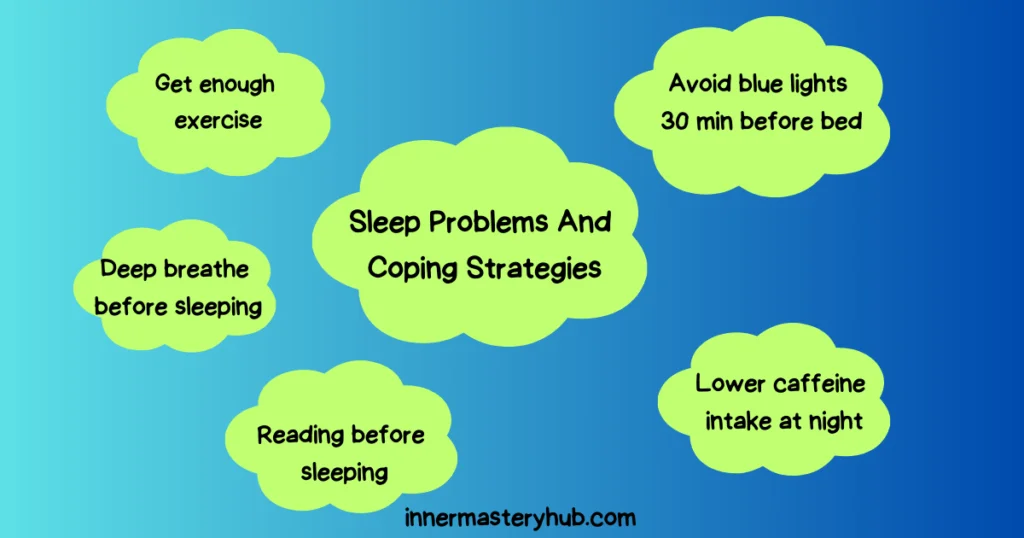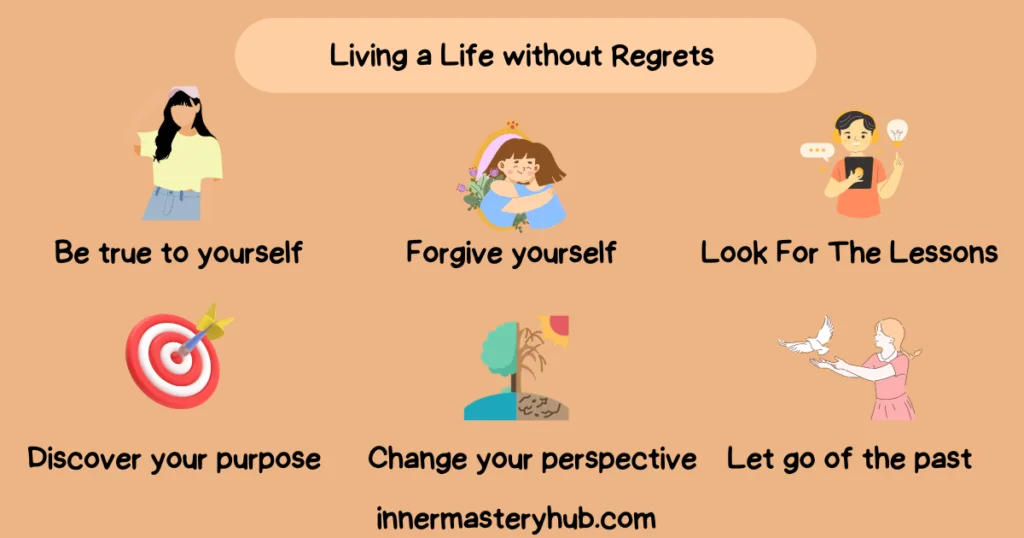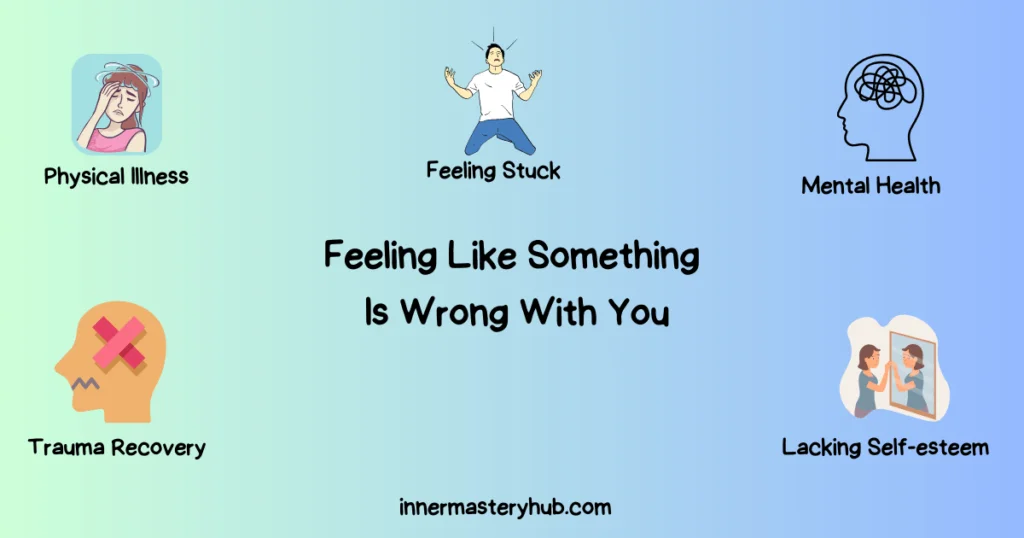
For many people, the problem of “self-abandonment” offers a strong barrier in the challenging journey of self-discovery and personal development. Although it is a subject that is frequently taboo, its effects on our relationships, self-esteem, and general well-being can be significant.
In this blog, we go in-depth into self-abandonment, explaining what it is, why it occurs, and most crucially, how to get past it. Join us as we start on a transforming self-exploration, offering insights and helpful advice to help you restore your sense of self-worth and create a more satisfying existence. Together, let’s start this empowering journey.
Table of Contents
What is Self Abandonment?
Self-abandonment is a pattern of ignoring your thoughts, feelings, and needs. It can manifest in many different ways, such as:
- Prioritizing others over yourself
- Putting your needs on the back burner
- Ignoring your gut feelings
- Staying in toxic relationships
- Engaging in self-destructive behaviors
Self-abandonment is often rooted in childhood experiences. If you didn’t have your needs met or your feelings validated as a child, you may have learned to abandon yourself to survive.
Self-abandonment can have a devastating impact on your physical and emotional experience. It can lead to anxiety, depression, low self-worth, and relationship problems.
Why do we abandon ourselves?
We might abandon ourselves due to a lack of self-trust for many reasons. Some of the most common reasons include:
- Childhood experiences. If we didn’t have our needs met or our feelings validated as children, we may have learned to abandon ourselves to survive. This can be especially true if we experience abuse or neglect.
- Low self-esteem. If we don’t believe we are worthy of love and respect, we are more likely to abandon ourselves. This can be due to several factors, such as unmet needs in childhood, bullying, or criticism from others.
- Perfectionism. If we have unrealistic expectations, we are likelier to feel like we are not good enough. This can lead us to abandon ourselves to meet our impossible standards.
- People-pleasing. If we are always trying to please others, seeking validation from others, we may neglect our needs. This can lead to feelings of resentment and self-abandonment typically.
- Trauma. Traumatic experiences can lead us to disconnect from ourselves and our emotions to cope. This can make it difficult to meet our needs and care for ourselves.
Self-abandonment is not a choice. It is a coping mechanism that we may develop in response to difficult experiences. Once we become aware of our self-abandonment patterns, we can heal and learn to care for ourselves better.
Relared: Escaping from Reality – Avoidance Or Healing?
Examples of self-abandonment
Here are some examples of self-abandonment:
Prioritizing others over yourself. This might look like always saying yes to requests from others, even when you’re overwhelmed or suppressing your need to help others.
Putting your needs on the back burner. This could be like skipping meals, sleeping because you have too much to do, or working long hours without taking breaks.
Ignoring your gut feelings. This might look like staying in a relationship you know isn’t good for you or going to a job interview for a job you don’t want.
Staying in toxic relationships. This might look like staying in a romantic relationship with someone who is abusive or neglectful or staying in a friendship with someone who is always putting you down.
Conflict Avoidance. Conflict avoidance is refraining from confronting or resolving conflicts, disputes, or problems. They frequently place more importance on maintaining peace and harmony than resolving disputes, which can have detrimental long-term effects on interpersonal relationships and the workplace.
Codependency. Codependency is a pattern of relationships where one person overly depends on another for their emotional health and sense of self. It frequently entails providing support or excessively reliant on a spouse, friend, or family member, leading to unhealthy and codependent relationships focusing on self-abandonment.
Related: 11 Ways To Figure Out Why You Feel Like “What’s wrong with me”
10 Ways to Stop Self Abandonment
Here are coping mechanisms;
1. Allow yourself to have feelings and needs.
It’s not selfish to prioritize your feelings and needs. It’s a sign of self-respect and self-love. When you tend to your emotional and physical needs, you become better equipped to support others and build healthier relationships.
Allow yourself to have feelings and needs, especially when addressing self-abandonment. I’ve been there and know how easy it is to ignore our emotions and desires to meet others’ expectations or keep the peace.
But here’s the thing: your feelings, needs, and desires are valid and matter. They’re a fundamental part of who you are; acknowledging them is the first step toward healing and self-empowerment.
Feeling sad, angry, happy, or any other emotion is okay. Don’t judge yourself for having these feelings. Emotions are a natural part of being human, providing valuable insights into what’s going on in your life. You’re honoring your true self when you let yourself experience and express your emotions.
Listen to your inner voice, honor your feelings, and advocate for your needs. This is a powerful way to stop self-abandonment and embark on self-discovery and personal growth. You’re worth it, and you deserve to be your authentic self.
2. Allow yourself to be creative and unique.
Permitting yourself to be creative and unique is a beautiful way to combat self-abandonment. It’s easy to fall into the trap of conformity, trying to fit into society’s molds or living up to others’ expectations. But the truth is, you are a one-of-a-kind masterpiece, and your uniqueness is something to embrace, not abandon.
Your creativity is a special gift that you bring to the world. Whether through art, writing, problem-solving, or any other form of self-expression, your creative energy is vital to who you are. When you stifle it, you deny yourself a crucial avenue for personal growth and self-discovery.
Being creative and unique is not about seeking approval from others; it’s about staying true to yourself. It’s about embracing your quirks, your passions, and your dreams. When you fully acknowledge and express your uniqueness, you’re on the path to self-acceptance and self-love.
3. Stand up for yourself.
One of the most important things you can do to heal from self-abandonment is to learn to stand up for yourself. This means putting your needs first, even if it means saying no to others. It also means speaking up for yourself when you’re being treated unfairly or disrespectfully.
I know it can be scary to stand up for yourself, especially if you’re used to abandoning your needs. But you deserve to be treated with kindness and respect. You deserve to have your needs met.
Figure out what are the things you need to be happy and healthy. Once you know your needs, you can start advocating for them.
It’s okay to say no to people, even if you want to please them. Taking time for yourself is also okay, even if you have other things to do. Setting boundaries will help protect your energy and take care of yourself. Be clear and direct in your communication. Avoid using passive language or beating around the bush.
When you start to stand up for yourself, some people may not be happy about it. They may try to guilt-trip you or make you feel bad about yourself. But it’s important to stay strong and stay true to your needs.
Related : 6 ways to Live Life Without Regrets
4. Take Control Of Your Mental Health
Taking control of your mental health is necessary to avoid self-abandonment. When you abandon yourself, you’re neglecting your own needs and wants. This can lead to several mental health problems, including anxiety, depression, and low self-esteem. Mental health might suffer from self-abandonment, but you can regain control. Put self-care first, ask for help, and consider your needs and feelings.
Asking for assistance or expressing your need is not a sign of weakness. In actuality, it’s a powerful move. Accept counseling, meditation, or any other mental health techniques that speak to you. Choose self-compassion and self-empowerment because you are the creator of your own mental health story. It’s acceptable not always to feel okay, but it’s also acceptable to take control and guide your mental health in a more positive direction.
5. Pardon yourself
Self-blame frequently coexists with self-abandonment. But it would be best if you asked for forgiveness. Forgive yourself for your past decisions, and acknowledge that you followed your instincts at the time and that you are still developing. Give yourself the same grace for your shortcomings as you would a friend.
Self-acceptance and healing are both facilitated by self-forgiveness. It allows you to move on with a lighter heart and relieves the weight of regret. Remember that since you are only human, making mistakes is inevitable. Please forgive yourself and accept the road of development and self-love.
6. Be Your Own Comfort Zone
To be in your comfort zone means to be comfortable with yourself in any situation. It is to be confident in your abilities and to trust your judgment. It is to accept yourself for who you are, flaws and all.
Surround yourself with positive people. The people you spend time with can greatly impact your self-esteem. Make sure you surround yourself with people who love and support you and make you feel good about yourself.
Challenge your negative thoughts. We all have negative thoughts about ourselves from time to time. But it’s important to challenge these thoughts and ask yourself if they are true. Are you being too hard on yourself? Are you comparing yourself to others unfairly? You will feel better about yourself if you can identify and challenge your negative thoughts.
Practice self-compassion by being kind and understanding towards yourself, even when you make mistakes. It is about accepting yourself for who you are, flaws and all. When you practice self-compassion, you tell yourself you are worthy of love and happiness, even when you don’t feel perfect.
7. Accept you are worthy.
Own your worthiness is believing you deserve love, respect, and happiness, regardless of your external circumstances or accomplishments. It is to accept yourself for who you are, with your flaws, and that you are worthy of love and happiness simply because you exist. Ask yourself, What are your values? What are your strengths and weaknesses? What are your goals and dreams? The more you know about yourself, the more confident you feel in your worthiness.
8. Tame Your Inner Critic
Your inner critic is that voice that tells you you’re not good enough, smart enough, or worthy of love. When you abandon yourself, you tell your inner critic it’s right. You’re telling it that you deserve to be treated poorly. And so, your inner critic gets louder and louder.
Listen to what it is saying to you.? Once you know what it’s saying, you can challenge it. Ask yourself if there’s any evidence to support your inner critic’s claims. If not, replace them with more positive and realistic thoughts.
When your inner critic is being mean, talk to yourself like you would talk to a friend who was feeling down. Re-kindling your inner critic takes time and effort, but it’s worth it. When your inner critic is more supportive, you’ll feel better about yourself and more likely to take care of yourself.
9. Understanding Your Triggers
Triggers are things that can cause you to feel overwhelmed or stressed, and they can lead to self-abandoning behaviors.
- Anxiety
- Stress
- Depression
- Trauma
- Rejection
- Criticism
- Conflict
Once you know your triggers, you can start developing coping mechanisms for dealing with them. This may involve things like therapy, support groups, or relaxation techniques.
Pay attention to your body and emotions. What happens to your body and emotions when you feel overwhelmed or stressed? Do you start to feel anxious or depressed? Do you withdraw from others? Do you engage in self-destructive behaviors?
Identify the situations or people that trigger you. Once you know your triggers, you can avoid them or develop coping mechanisms for dealing with them.
Talk to a therapist or counselor. A therapist or counselor can help you to understand your triggers and develop coping mechanisms for dealing with them.
10. Releasing Guilt and Shame
Guilt and shame are two related but distinct emotions. Guilt is the feeling of responsibility for a wrong or hurtful act. Shame is the feeling of being flawed or worthless as a person.
Here are some examples of guilt and shame:
- Guilt: Feeling guilty after lying to a friend.
- Shame: Feeling ashamed for making a mistake at work.
- Guilt: Feeling guilty for not spending enough time with family.
- Shame: Feeling ashamed for being overweight.
You can release the guilt and shame associated with self-abandonment by forgiving yourself. Everyone makes mistakes. It’s part of being human. Remind yourself that self-abandonment is not your fault. It’s a coping mechanism that you develop to deal with difficult experiences. You didn’t abandon yourself because you’re weak or flawed. You did it because you were trying to cope with difficult experiences. Tell yourself that you’re worthy of love and respect. Releasing guilt and shame is an important step in healing from self-abandonment.
FAQS
Self-abandonment in Relationships
Self-abandonment in relationships is when you put your partner’s needs and wants ahead of your own, neglecting your needs and feelings. This can lead to resentment, anger, and sadness and damage self-esteem. To overcome self-abandonment in relationships, identify your needs, set boundaries, communicate openly with your partner, and care for yourself.
What causes a person to abandon themselves?
People may abandon themselves due to low self-esteem, societal pressures, past trauma, or the fear of rejection. It can result from neglecting one’s needs, values, and desires to conform or please others, ultimately leading to self-neglect and a loss of authentic identity.
Do I have emotional abandonment?
I don’t have enough information to determine if you have experienced emotional abandonment. Emotional abandonment often involves feeling neglected or unsupported by someone significant in your life. If you feel this way, seeking support from a therapist or counselor to explore and address these feelings is essential.
How do I know if I have trauma abandonment?
You may have trauma-related abandonment issues if you experience intense fear of rejection, struggle to trust others, have recurrent feelings of worthlessness or self-blame, and if past abandonment experiences significantly impact your relationships and well-being. Consulting a mental health professional can help assess and address such trauma.
What are the five stages of abandonment?
The five forms of self-abandonment are:
Shock and disbelief: This is the initial stage, where you may feel numb or unable to process what is happening.
Anger and denial: You may feel angry at the person who abandoned you and deny it has happened.
Bargaining and guilt: You may try to bargain with the person who abandoned you or feel guilty for something you did or didn’t do.
Depression and sadness: You may feel depressed and sad and lose interest in the things you used to enjoy.
Acceptance: This is the final stage, where you come to terms with what has happened and start to move on with your life.
How does a person with abandonment issues act?
A person with abandonment issues might exhibit clinginess, fear of rejection, trust issues, and difficulty forming secure relationships. They can be emotionally reactive, seek constant reassurance, or isolate themselves to avoid potential abandonment. Such behaviors stem from a deep-seated fear of abandonment or rejection by those they care about.
How do you heal self-abandonment?
Healing self-abandonment often involves self-compassion, self-awareness, and therapy. Recognize self-worth, set boundaries, and prioritize self-care. Identify underlying issues, such as low self-esteem or past trauma. A therapist can provide guidance, support, and tools to foster self-love, self-acceptance, and healthier relationships with oneself.






